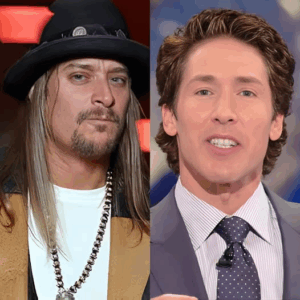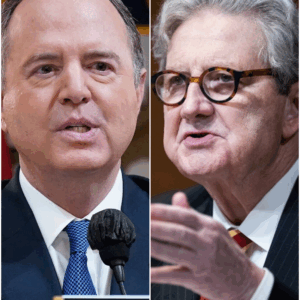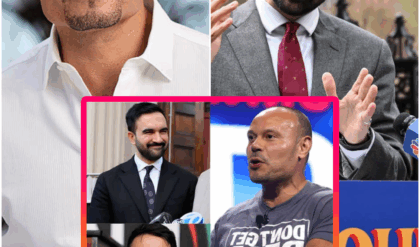WHEN THE GAME STOPPED AND A MOVEMENT BEGAN
For the first time in decades, America didn’t watch the game — it watched a moment.
The roar of the crowd faded. The screens dimmed. And across living rooms from Texas to Tennessee, a hush fell over millions of viewers as something unprecedented unfolded on national television: a halftime show that wasn’t about spectacle, but about soul.
Erika Kirk, widow of the late commentator Charlie Kirk, stood center stage at the “All-American Halftime Show” — an event that began as an experiment and ended as a cultural awakening. What she and her team created that night would ripple far beyond the stadium lights, igniting a national conversation about faith, family, and the meaning of unity in a divided country.

A HALFTIME SHOW UNLIKE ANY OTHER
For weeks, Turning Point USA had teased a faith-driven alternative to the Super Bowl halftime spectacle — a production rooted not in celebrity glamour, but in American tradition. Critics dismissed it as political theater. Supporters prayed it would work.
When the night finally arrived in Dallas, there were no fireworks. No pop stars. Just silence.
A lone trumpet began to play The Star-Spangled Banner as veterans from every branch of the military unfolded a massive American flag across the field. Families in the stands stood shoulder to shoulder, hands over hearts. Some wept. Others prayed.
Then Erika Kirk stepped into the light — carrying a folded flag in one hand and a framed photo of Charlie in the other. The crowd fell utterly silent.
“This isn’t about winning,” she said, her voice trembling but resolute. “It’s about remembering who we are.”
FROM ENTERTAINMENT TO RESTORATION
What happened next turned a tribute into a transformation.
Behind her, a massive screen came to life with images of everyday Americans — police officers ending their shifts, teachers leaving classrooms, farmers at sunrise, soldiers returning home. Then, as a gospel choir began to sing God Bless America, the stadium filled with a sound more prayer than performance.
Online, the moment exploded. Within minutes, hashtags like #AllAmericanHalftime, #FaithFamilyFreedom, and #RememberCharlieKirk trended worldwide. Even major networks that had dismissed the event began cutting to live footage from Dallas.
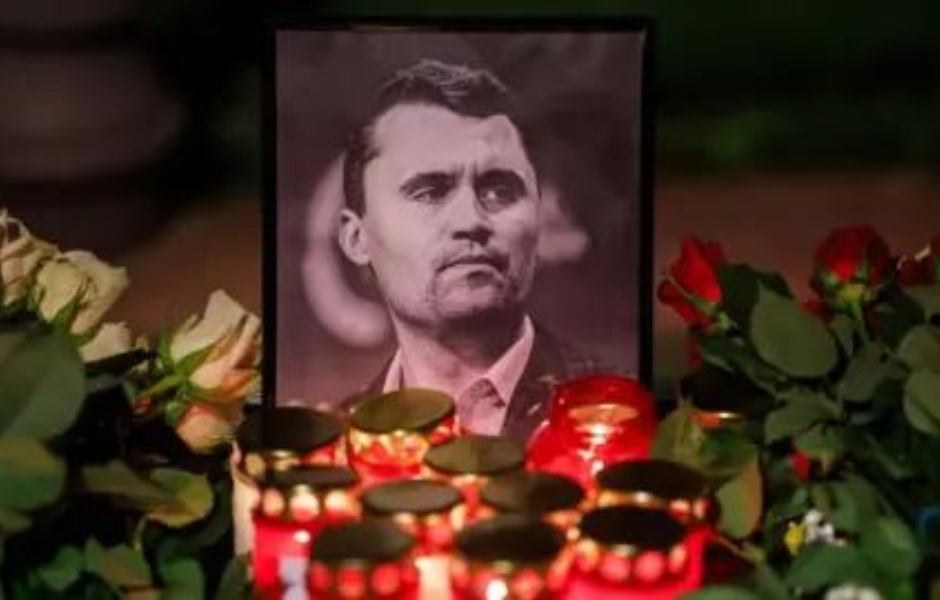
Viewers described the feeling as “goosebumps through the screen.” Veterans saluted from their living rooms. Churches held watch parties. Families turned down the game volume just to listen.
“This wasn’t entertainment,” one broadcaster admitted live. “It was restoration.”
“A LIGHT FOR CHARLIE”
Midway through the broadcast, Erika introduced a tribute segment titled “A Light for Charlie.”
The stadium darkened as thousands of small lights flickered to life — candles, phone screens, and lanterns — glowing like constellations across the stands.
On the big screen, archival footage played of Charlie Kirk’s speeches about courage, conviction, and faith. His voice echoed through the speakers:
“America is still good — because her people are still brave.”
For a long, breath-held moment, the stadium was perfectly still. Then came applause — not thunderous or chaotic, but rhythmic, like a heartbeat shared by thousands.
ONE NATION UNDER GOD
In the closing moments, the stage filled with performers — country legends, church choirs, and faith-driven newcomers — joining hands as fireworks painted the Texas sky in red, white, and blue.
Across America, homes echoed with the same words rising from the crowd:
“One nation, under God.”
Even those who didn’t share the show’s politics admitted the moment’s power.
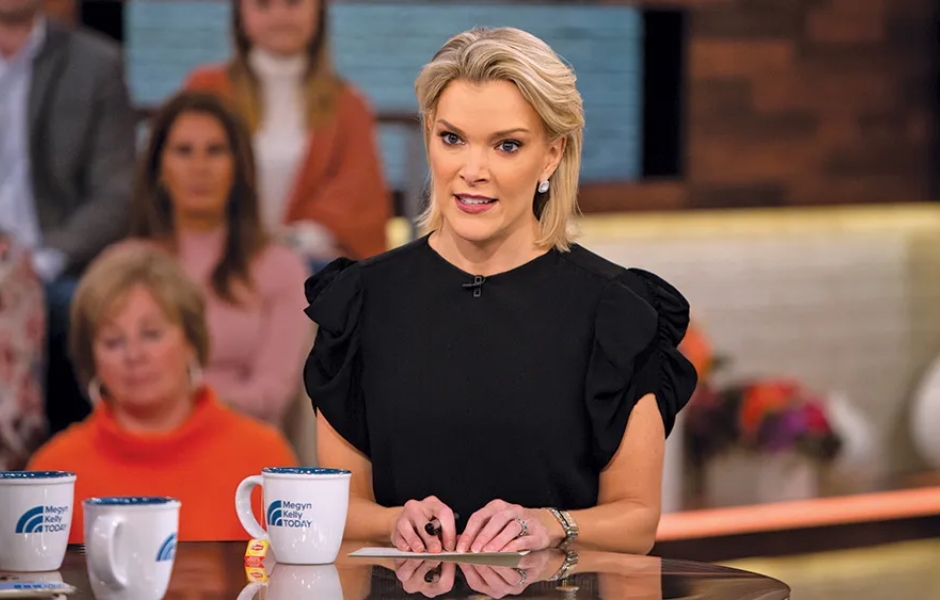
“It wasn’t just a show,” one journalist wrote afterward. “It was a revival — in the middle of halftime.”
For a country wearied by division, the message felt like oxygen. The All-American Halftime Show had done the impossible: it had paused the noise long enough for people to listen — not to pundits or politicians, but to one another.
THE AFTERSHOCK
In the days that followed, social media and talk shows lit up with debate. Some hailed Erika Kirk as a cultural visionary who redefined what halftime could mean. Others accused her of politicizing patriotism.
But to those who had been there — or who watched with tears in their eyes — the night wasn’t about ideology. It was about identity.
As one veteran posted afterward:
“We stood for something again. Not because someone told us to, but because we remembered why.”
From megachurches to military bases, the show became a conversation piece — and in many cases, a moment of reconciliation. People who hadn’t prayed in years gathered to sing God Bless America together.
It wasn’t about football anymore. It was about rediscovering what bound them beyond the scoreboard.
BEHIND THE SCENES
Insiders later revealed that the show almost didn’t happen. Production crews battled tight deadlines, network resistance, and last-minute venue restrictions.
“There were nights we thought we’d lose everything,” one producer said. “But Erika never wavered. She kept saying, ‘This is bigger than us.’”
The project, supported by Turning Point USA and a coalition of faith-based organizations, was designed not as a protest but as an alternative — a reminder that cultural renewal doesn’t require cancellation, only courage.
A MOVEMENT BEGINS
By morning, news outlets across the spectrum had one headline in common: “The Halftime Show That Stopped America.”
Clips from the broadcast amassed tens of millions of views in under 24 hours. Requests poured in for replays, interviews, and encore performances.
But Erika’s own message was simple:
“We didn’t come to replace anything,” she said. “We came to remind people that faith and freedom can still share the same field.”
For many, it was the first time they’d seen patriotism and prayer co-exist on such a public stage — unpolished, unscripted, and unapologetically American.
It wasn’t just nostalgia. It was healing.
THE LEGACY OF THAT NIGHT
As the final fireworks faded over Dallas, families across the nation were still standing — some singing, others silent, but united in something rare and precious.
What began as a halftime alternative had become a national revival.
“It wasn’t about ratings,” one producer said later. “It was about resonance.”
In a time when headlines divide and platforms polarize, the All-American Halftime Show reminded a fractured nation that unity isn’t found in spectacle — it’s found in shared belief, quiet courage, and a love for something larger than ourselves.
That night, America didn’t just watch history.
It felt it.
News
The auditorium glitched into silence the moment Joel Osteen leaned toward the mic and delivered a line no pastor is supposed to say in public. Even the stage lights seemed to hesitate as his voice echoed out: “God will NEVER forgive you.” People froze mid-applause. Kid Rock’s head snapped up. And in that weird, suspended moment, the crowd realized something had just detonated off-script.
The crowd expected an inspiring evening of testimony, music, and conversation. What they got instead was one of the most explosive on-stage confrontations ever witnessed inside a church auditorium. It happened fast—36 seconds, to be exact.But those 36 seconds would…
The room stalled mid-breath the moment Mike Johnson snapped open a black folder that wasn’t on any official docket. Cameras zoomed. Staffers froze. The label on the cover — CLINTON: THE SERVER SAGA — hit like a siren. Johnson leaned toward the mic, voice sharpened enough to scratch glass, and read a line that made every timeline jolt: “Her email is criminal.”
Here’s the thing about made-for-TV government: it knows exactly when to hold a beat. Tuesday’s oversight hearing had the rhythm down cold—routine questioning, polite skirmishes, staffers passing notes like we’re all pretending this is not a stage. And then Mike…
🔥 “THE FLOOR SHOOK BEFORE ANYONE COULD SPEAK.” — Investigator Dane Bonaro didn’t walk into the chamber — he tore through it, slamming a blood-red binder onto the desk with a force that made the microphones hiss. The label on the cover froze the room mid-breath: “1.4 MILLION SHADOW BALLOTS.” He locked eyes with the council and snarled, “You want the truth? Start with this.” For one suspended second, every camera operator lifted their lens like they’d just smelled a political explosion.
Here’s a scene you’ve watched a hundred times if you’ve spent enough hours in hearing rooms and greenrooms: a witness with a flair for performance, a committee hungry for a moment, and a gallery of reporters quietly betting which line…
🔥 “THE SMILE FLICKERED—AND THE ENTIRE STUDIO FELT IT.” — Laura Jarrett walked onto the Saturday TODAY set with the kind of calm, polished glow producers dream of. Cameras glided, lights warmed, and the energy felt like a coronation. But right as she settled between Peter Alexander and Joe Fryer, something shifted — a tiny hesitation in her smile, the kind that makes everyone watching sit up a little straighter. And then it came: a voice from outside the studio, sharp enough to snap the broadcast in half. For a full second, no one moved.
Here’s the thing about TV milestones: they’re designed for easy applause. A new co-anchor takes the desk, the chyron beams, the studio lights do their soft-shoe, and everyone is on their best behavior. It’s a ritual as old as morning-show…
🔥 “THE ROOM STOPPED LIKE SOMEONE CUT THE OXYGEN.” — What’s racing across timelines right now isn’t framed as a speech, or an interview, or even a moment. It’s being told like a rupture — the instant Erika Kirk, normally armored in composure, let a single tear fall while standing beside Elon Musk. Witnesses in these viral retellings swear the tear didn’t look emotional… it looked inevitable, like something finally broke through her defenses. And when Musk turned toward her, the entire audience leaned in as if they already knew the world was about to shift.
It was billed as a calm forum on human rights—an hour for big ideas like freedom, transparency, and the obligations that come with having a public voice. The stage was washed in soft gold, the kind of lighting that flatters…
🔥 “THE ROOM WENT DEAD IN UNDER A SECOND.” — What unfolded inside the Senate chamber didn’t look like a hearing anymore — it looked like a trap snapping shut. Adam Schiff sat back with that confident half-smile, clutching a 2021 DOJ memo like it was the final move in a game he thought he’d already won. Staffers say he timed his line perfectly — “Your rhetoric ignores the facts, Senator. Time to face reality.” But instead of rattling Kennedy, something in the senator’s expression made even reporters lean forward, sensing the shift before anyone spoke again.
It didn’t look like much at first—another oversight hearing, another afternoon in a Senate chamber where the oxygen gets thinned out by procedure. Then Adam Schiff leaned into a microphone with a lawyer’s confidence, and John Neely Kennedy pulled out…
End of content
No more pages to load
